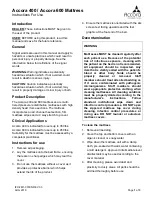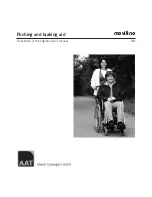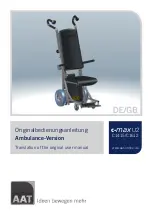
Owner’s Manual Baldertech Balder
| Baldertech 7
2. KEY DATA
2.1. Restrictions during normal use
2.1.1. INTENDED USE/USER
•
All Balder wheelchairs are designed to transport one – 1 – person.
•
The wheelchair’s maximum load depends on the model and is specified on the product label,
maximum load must not be exceeded.
• Never allow anyone else to ride with you, either behind you or on the footrests.
•
Balder series is class B of wheelchairs, and are intended for indoors- and limited outdoors use.
•
The user must have cognitive, physical and visual abilities to safely drive and control the wheel
-
chair in a maximum slope of 6°. If you are in doubt if the wheelchair is suitable to your usage,
contact your supplier.
•
Balder F and Junior series are offered in several models with user weight up to 120 kg. The
product label provides information on user weight, model, type, serial number and year of man
-
ufacture.
2.1.2. SURFACES
DANGER
Take care when using the wheelchair on uneven, wet or slippery surfaces
(gravel, loose sand/earth, wet grass, etc.). These are conditions in which
you could overturn or lose control of your chair.
Bear in mind that negotiating obstacles can involve a risk of overturning.
Remember that your chair is heavy. Do not travel in areas where there is a
risk of the surface on which you are traveling collapsing.
Avoid traveling through water more than 7 cm deep. This may damage the
electric motor and systems, as well as the battery.
When traveling on slopes in excess of 6 degrees, remember that this will
affect the stability of the chair and there is a risk of the chair overturning.
2.1.3. OBSTACLES, SIDESLOPES AND KERBS
NOTE
When your vehicle drives downhill, the motor generates energy. This energy charges the battery.
However, if the battery is already fully charged, it cannot accept the generated energy anymore.
When this happens the battery voltage becomes too high, which can result in damage to either
the controller or the batteries. The controller will try to prevent this damage and if needed it will
ultimately force the vehicle to halt abruptly.
When you go downhill at a slower speed, the motor will generate less energy. The batteries will
have more time to absorb this energy before they are fully charged. This will reduce the risk of a
sudden halt, and it will extend the life of the batteries.








































